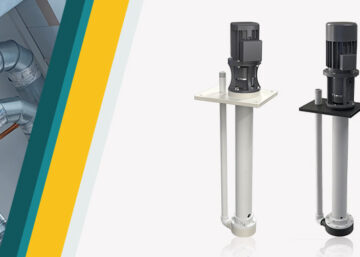Air Operated Double Diaphragm Pneumatic Pumps
In previous posts we have defined a double diaphragm pneumatic pump (AODD) as a type of volumetric pump consisting of two pumping chambers which are filled and discharged alternately by the movement of flexible membranes. The pneumatic distributor alternately feeds the air chambers, positioned behind the diaphragms, favoring the pumping action. AODD pumps are typically used for a variety of transfer applications and can handle a wide variety of fluids, including viscous, abrasive and shear sensitive fluids. Double diaphragm pumps are characterized by sturdiness, reliability and ease of maintenance. Thanks to the use of particular materials, they can be the ideal solution for operation in hazardous or potentially explosive environments.
Strengths of double diaphragm pumps
This type of operation, combined with the particular design configuration, allows to obtain a series of application advantages that can be summarized in the following points:
- Ability to run dry: the double diaphragm pump will not be damaged when running without fluid.
- Self-priming: double diaphragm pumps can run dry and are able to suck the fluid even when the pump is not clogged.
- Operating safety: AODD pumps are air-operated and represent an excellent solution for use in potentially explosive environments. The use of specific materials, such as carbon, makes the pumps conductive and therefore suitable for even the most volatile environments.
- Versatility: dimensions, materials and ease of installation make AODD pumps an extremely versatile solution capable of handling a wide range of fluids from water to oils, from sewage to acid and corrosive substances.
- Low shear: thanks to special cutting speed control systems, the double diaphragm pumps can handle shear sensitive fluids such as food substances, latex, inks and polymers.
- Reduced need for maintenance: the low propensity to wear and damage to components reduces the impact of maintenance and assistance costs.
What is a gear pump?
We come now to gear pumps. This type of pump works by rotating the gears which have the task of channeling the fluid inside the cavities present in the individual teeth. When a fluid chooses the path of least resistance, the latter flows towards the drain through the meshed parts. Gear pumps can have a different design configuration depending on the type of fluid to be managed.
Internal gear pumps are more suitable for handling viscous fluids with the presence of solid elements thanks to the disjunction and rejoining of the teeth which respectively cause the suction and delivery of the fluid. External gear pumps, more suitable for handling low viscous fluids, trap the fluid between the gear teeth and transport it from the suction to the delivery area.
Gear pumps are used in the chemical industry (management of resins, pigments, polymers), in the paint and construction sectors, in the fuel industry (transport of oils and fuels) and in the food sector (management of syrups, creams and molasses).
Advantages of using AODD pumps over gear pumps
Below we have drawn up a list of advantages related to the use of AODD technology compared to the use of gear pumps.
- Ability to run dry: Double diaphragm pumps can run dry without damaging the pump components. The same type of advantage is not obtainable in the case of gear pumps that do not allow dry operation.
- Variety of fluids handled: double diaphragm pumps can handle fluids with a high variability in terms of flow, viscosity and head. This variability is reduced in the case of gear pumps which have a limited capacity to handle liquids with variable viscosity, thixotropic or non-Newtonian.
- Ability to handle abrasive fluids: the design configuration and the type of materials used allow AODD pumps to treat abrasive fluids that could hardly be managed with gear pumps due to the high probability of component wear.
- Component wear: in the case of AODD pumps, thanks to the design characteristics, the fluid does not come into contact with the main pump components. For this reason, the possibilities of wear are limited. In the case of gear pumps, many parts of the pump come into contact with the fluid, increasing the possibility of wear and damage.
- Dead-Head applications: diaphragm pumps, unlike gear pumps, can easily manage frequent stops and restarts without particular energy consumption.
How to choose the ideal double diaphragm pump?
Are you convinced of the application advantages of AODD technology and now you need to identify the ideal solution for your plant or application? The Debem team can support the most complex design and operational needs. Contact him now to choose the technology that best suits your needs.








